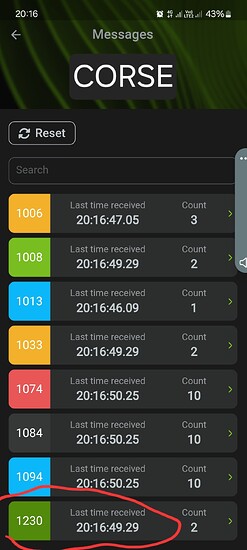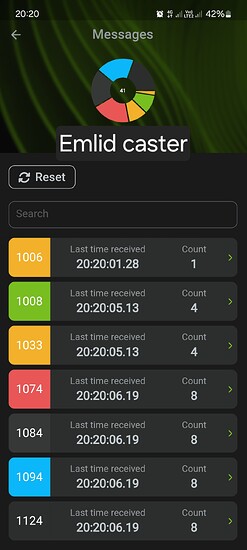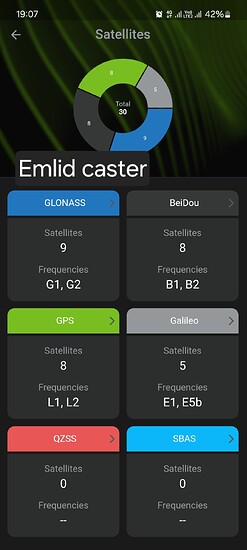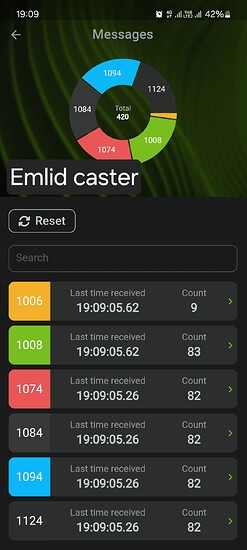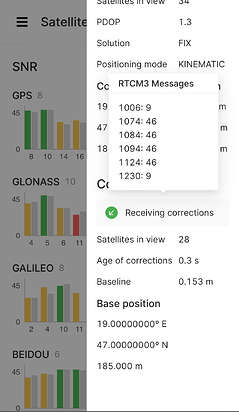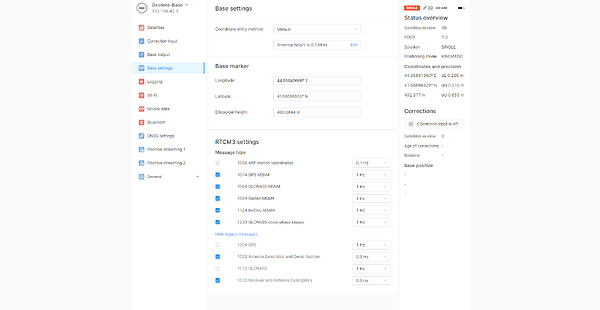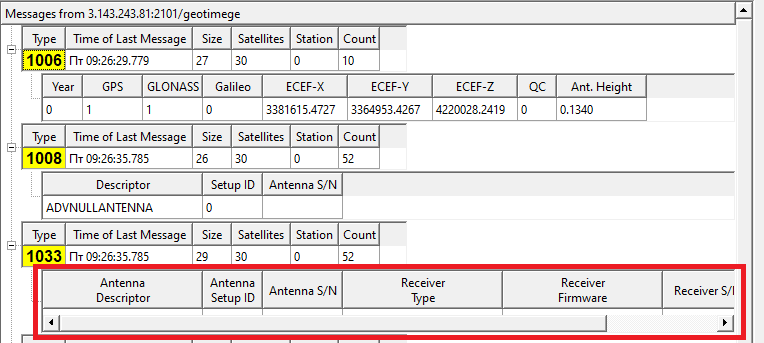I am still experimenting with the caster and the base. I think my experiments will help you.
I have conducted several tests.
Experiment 1:
I installed Rs2 as a base station. Connected it to emlid caster. The base observes 39-40 satellites of all constellations. It broadcasts information about 30-31 satellites to the caster. When connecting to this base via emlid caster receivers Rs2, Rs2+, Rs3 and Rx, I observe the following situation (all rovers were 30-50 meters from the base in approximately the same conditions). RS2, RS2+ and RS3 work normally and use all satellite constellations, while the solution uses 25-27 satellites out of 30-33 observed by them. At the same time, as I have already said above, the base observes 40, but broadcasts 30-31. Considering the elevation mask and the noise/signal on the rover, we can understand why 25-27 satellites are involved in the solution, which is an acceptable and very good result at the moment. RX in the same conditions observes all satellite groups, but the solution uses only GPS and GLONASS. Following all the same conditions, but disconnecting all Emlid receivers from the QVSTER and connecting Stones s850+, s800a, Trimble R10 and Ruide r93i to it, we observe the following picture. All Stonex and Ruide receivers work normally and see about 35-37 satellites, and the solution uses 29-31 (but somehow their Chinese software does not inspire much confidence, although this is only my subjective opinion). As for Trimble R10 (and it seems to me that Leica receivers will behave the same way), no matter what I do, no matter how I configure messages in emlid caster, and I have probably tried all the options that are available, but Trimble R10 observes 26-27 satellites and uses 12-13 - GPS 7-8, GLONASS 3-4, Beidou -2 (always 2) and completely ignores Galileo. At the same time, connecting it to the local Cors system caster, Trimble R10 also observes 26-27 and uses 16-18 satellites including Galileo satellites (the local Cors system does not support Beidou).
Experiment 2:
The conditions are the same, the only difference is that we only change the caster to another free one, RTK2go. We observe exactly the same situation as I described above.
I have a guess, I don’t know whether you will confirm it or not. It seems to me that Emlid caster is based on Rtk2go, and it in turn is based on Rtklib. Am I right?
Experiment 3:
Now I use Ruide r93 instead of Rs2 as a base station!
I connect it to emlid caster. By the way, with such a connection, message 1230 appears in Ntrip checker. Just like in the first experiment, Emlid and Stonex receivers work the same way and give their maximum, and Trimble R10 refuses to take Galileo into the solution.
Experiment 4:
I connect all the above receivers to the local Cors system. All models, including Trimble R10, give everything to the maximum, observe and use GPS, GLONASS and Galileo in the solution (Beidou is not supported by our Cors system)
I deliberately did not set up an experiment where Trimble will be used as a base station, since a lot is written about this on the forum and not everyone is happy.
Also see the screenshots that I am attaching to this letter. The screenshots show the information that Ntrip cheker gives about the satellite groups observed by the base and their messages.
I am rooting for Emlid, I really like this company and its products, so I want Emlid to become the best.
P.S. Our Cors system uses Leica GRX1200.




